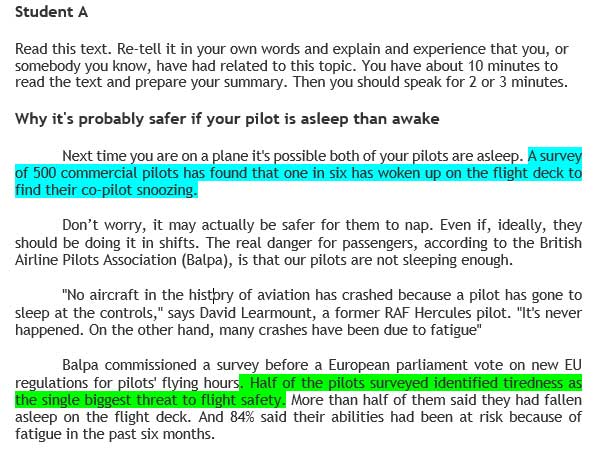Kahoot can be used to work on speaking skills, be it after or before a speaking activity.
Students can be tested on the content of texts they read and talked about, on vocabulary, on aspects of pictures they described, on discussion language … Whatever aspect we choose for a Kahoot on speaking skills will probably stick to our students’ memories, as they will do their best to recall what they learnt and they will pay attention to feedback, because they will be highly motivated to climb the leaderboard.
One key aspect when designing a Kahoot for speaking skills is considering the time allowed in each question. Usually, answering a question in the quiz will involve exchanging opinions with partners or team members, which may lead us to allow for 60, 90 or 120 seconds for each question.
The following two screenshots are taken from a Kahoot which tested a speaking activity carried out in groups of three. Each student had to read a different text (A, B or C). Then, they had to tell their partners what their text was about. They could also help each other to understand difficult vocabulary. Thus, questions were based on the content of the text and on vocabulary.
The statistics for this question show that students answered quite quickly, but most of them chose the wrong answer. Interestingly, the younger the people in the group, the faster they tend to answer.
These screenshots show results from three different upper-intermediate groups.
Students played this Kahoot in groups of three. This is why the number of participants looks tiny.
Clearly, option A was just added for fun. The real work consisted in choosing between B and C.
The following screenshot shows where the key lies (highlighted in green) and where students may have got confused and decided to choose C.
 Success in this Kahoot depended quite a lot on the fact that all the students in a group had read and understood their text accurately, as the quiz contained three questions about each text. The group member who had read the text was the one who could tell the others which answer to choose.
Success in this Kahoot depended quite a lot on the fact that all the students in a group had read and understood their text accurately, as the quiz contained three questions about each text. The group member who had read the text was the one who could tell the others which answer to choose.
This applied especially to questions based on text content. Questions about vocabulary could be answered by a member of the group who had a good language level, regardless of whether they had read the text or not.
Although there were three questions for each text, the balance between content-based questions and vocabulary-based questions wasn’t the same for all texts. In texts A and B, there were two questions about the ideas in the text and one about vocabulary. In text C, however, there were two questions about vocabulary and one about the ideas in the text.
A brief teacher’s guide and screenshots of the questions can be found in this PDF document.



